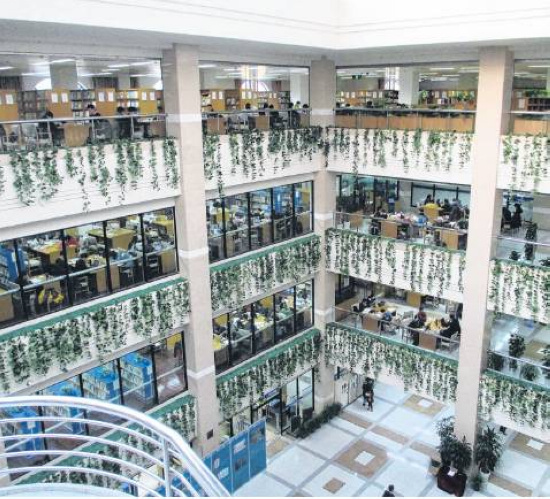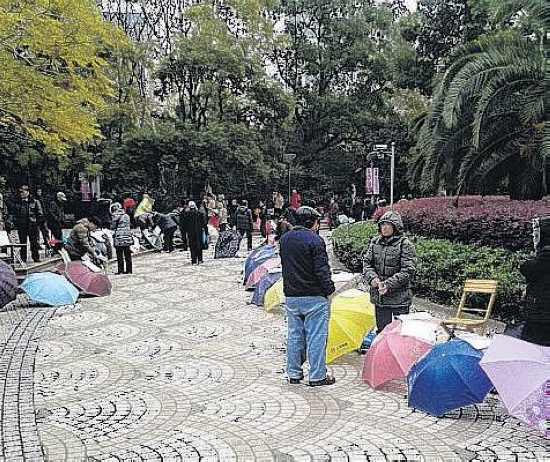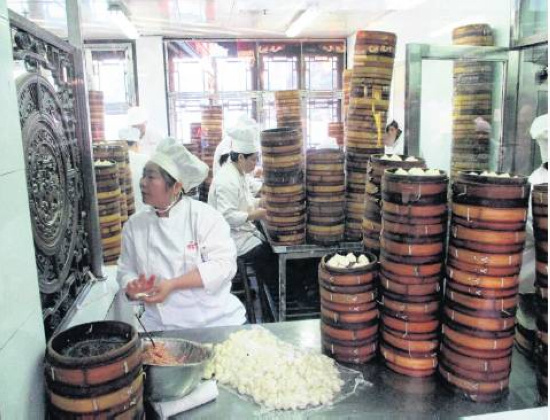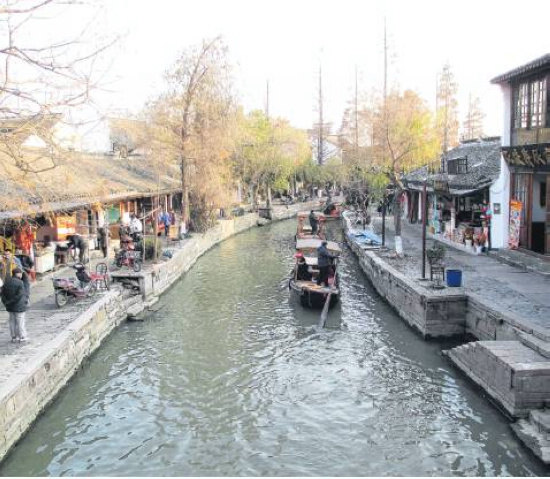|
Tony Eyre, the second prize winner of “Shanghai Get-together 2014 — The Third Recitation and Writing Contest”, has recently had a travel piece published in the lift-out lifestyle magazine of the Otago Daily Times, giving his reflections of Shanghai during the 8-day visit in 2014. Among the many exotic faces of Shanghai, there is also the familiar, Tony Eyre writes. A CITY FOR THE AGES
“Paris of the Orient” is one of the many labels that have been bestowed on Shanghai, China’s largest city of about 24 million people. This hint of the exotic has long been had a fascination for me and conjures up images of Shanghai’s colonial past with its great merging of Chinese and Western cultures. A surprise invitation to visit Shanghai had me heading off just before Christmas, leaving behind the beginnings of an exceptional summer to head into the onset of an eastern China winter. This was my first time to the city but for my wife, Yvonne Fogarty, it was a return to a very different Shanghai that she last visited 40 years ago. Our hotel accommodation was centrally located near the bustling East Nanjing Rd, China’s busiest shopping street, which on average has 1.7 million visitors each day. Long stretches of Nanjing Rd are pedestrianized, giving easy access to the multitude of luxury big-brand department stores, malls and boutiques. Stepping into this mass of humanity on the weekend was our first culture shock, a marked difference from walking down Dunedin’s George St. As visiting Westerners in the tourist off-season, we stood out in the crowd and were often the target for roaming merchandisers wanting to whisk us away to buy cheap Rolex watches and other designer lookalikes. One hawker appeared from nowhere, unabashedly asking me if I wanted to buy “fake”. In fact you could be led to believe that fake is the new real as the more “reputable” fake markers cater for your dream to swing the latest Gucci or Longchamp handbag. But shopping was not immediately on our agenda as we strolled down the Nanjing Rd towards Shanghai’s most famous promenade, the Bund. This exquisite stretch of stately buildings along the Huangpu River, built by Western powers in the early 20th century, is a permanent reminder of Shanghai’s colonial past as a major financial and trading centre. What is the most famous hotel in Shanghai? It has to be the Fairmont Peace Hotel on the Bund and that's where we headed first. This most distinctive Chicago Gothic-style high-rise with its green copper pyramid-shaped roof takes your breath away as you push your way through the revolving door to the magnificence of 1930s Art Deco. Charlie Chaplin, Marconi and Noel Coward have been some of its most famous patrons. Not to be overawed by its rich and famous guest-list, my wife Yvonne had a special reason to pay a visit to the hotel: she stayed there herself in 1974 as a member of the touring New Zealand national table tennis team. A walk along the Bund on the west bank of the Huangpu River is an experience you will never tire of repeating. The iconic Pudong skyline on the east side of the Huangpu River is a free-trade zone that is dominated by the eye-catching Oriental Pearl Tower and skyscrapers such as the Shanghai Tower, currently the second tallest building in the world. One evening, we took a ferry cruise on the Huangpu River. This is a great way to take in the spectacle of the city lights of Shanghai. All buildings on the Bund and Pudong are illuminated from about 7pm to 11pm and put on an absorbing animated performance. Walking is a great way to explore the inner city, provided you take good care in singling out landmarks to find your way back to your hotel. I was keen to see what Shanghai had to offer in the way of bookshops and other library connections. My own bookshelves at home provided the link to three New Zealand writers whose paths all crossed briefly in the Shanghai of the 1930s. Rewi Alley, our most famous New Zealander with China connections, came to Shanghai in 1927. As well as founding the “Gung Ho” industrial co-operatives, he was a prolific writer and poet. Robin Hyde-represented in Dunedin’s Writers Walk-visited Japanese-occupied Shanghai in 1938 and met Alley. Her Chinese travel memoir Dragon Rampant gives a good account of war-torn Japanese-occupied Shanghai. Writer, journalist and Waitaki Boys’ High School old-boy James Bertram also visited Shanghai. In 1937, he was invited by Mao Zedong to Yan’an and interviewed Mao in what became known in Mao’s Collected Works as “The Interview with the British Journalist James Bertram”. The hunt for books led me to Fuzhou Rd, which is lined with bookstores and specialist fine art shops selling calligraphy books and supplies. The wow factor for me was the seven-storey Shanghai Book City where hundreds of shoppers rode the escalators to fan out on to vast floors of wall-to-wall books in the Chinese language. There was certainly no sign here of the printed book in decline. Mass production meant that prices were cheap and every imaginable literary classic seemed to have been reproduced in Chinese.
When I heard that the 24-storey Shanghai Library building is the tallest library in the world and the second largest library in China, I was curious to take a look. The library is the home of the “Window of Shanghai” cultural exchange project in which books are donated to libraries all around the world including the Dunedin Public Library. The architecture was spectacular, especially the towering internal atrium resplendent in hanging greenery. Taxis are an inexpensive way to explore further afield but, unless you are fluent in Mandarin, it is vital to have your destination and hotel addresses written down in Chinese. And then clip on your seat-belt (if you have one) and hold on to your seat for a thrill-seeking ride through wide and narrow Shanghai streets. Our many taxi drivers showed no emotion as cars, bicycles, motor scooters and pedestrians came at us from all directions, particularly at intersections where the car horn is an essential warning device: “Look out, I’m coming through!” A short ride took us to the eastern half of the former French Concession, an exclusive tree-lined neighborhood full off Boutiques, bars and restaurants and noted for its Shikumen (stonegate house) architecture. These “territorial concessions” were areas that Shanghai was forced to surrender to numerous colonial powers as a result of defeats in the Opium Wars of the 1840s when opium was introduced into China by British traders. We stumbled upon a lovely example of a Shikumen house near Xintiandi, which just happened to be a national political shrine: the site of the First National Congress of the Chinese Communist Party in 1921 where a 27-year-old Mao Zedong and 12 other delegates made for a full house. It’s a site that has attracted 10 million visitors but there were no queues the day we visited. Perhaps a winter’s day half an hour before lock-up is a good time to pop in and view the exhibitions of the history of the Chinese Communist Party. A walk in the park can bring its own surprises and while in the French Concession we wandered across to the beautifully laid out Fuxing Park. Midweek, the park becomes a playground for the elderly to escape from the confines of their own homes. Groups of mahjong and card players were scattered around the fringes of the lake, seemingly obvious to the chill in the air, while elderly couples dawdled along the maze of pathways. A towering 70-tonne granite sculpture of communist heavyweights Karl Marx and Friedrich Engels towers over the north end of the park, watching over passers-by like two stern grandfathers.
On another day, a more fascinating spectacle greeted us in the People’s Park, once the site of the Shanghai Racing Club back in the 1860s. The park is the home of the weekend Marriage Market where parents gather to advertise for a partner for their son or daughter. Their child’s “vital statistics” such as age, job, income and physical attributes are written on a single piece of paper and attached to umbrellas or hung on strings for prospective parents-in-law to view. One survey predicts that by 2020, 24 million Chinese men will be unmarried and struggling to find a bride. Shanghai’s Old Town is a very popular destination, with the Yuyuan Gardens and Bazaar the major attractions. Traditional pagoda-style buildings border the central lotus pond area with its zigzag bridge that leads to the 230-year-old Mid-lake Pavilion Teahouse. We climbed the stairs to take in the atmosphere-not the tea on this occasion-and were greeted by a large mounted photograph of Queen Elizabeth, who popped in for a cuppa in 1986.
A delicacy here is the Nanxiang steamed bun named after the restaurant where it is made. The thin dough wrappings filled with soup and minced pork or crab meat are so popular that a long takeaway queue is ever present outside the restaurant. A visit to the 400-year-old Yuyuan Gardens took on a special significance for me as a very tangible reminder of our sister-city relationship with Shanghai. Although on a larger scale to Dunedin’s Suzhou Chinese garden replica, the two-hectare Yu Garden with its six areas divided by undulating “Dragon walls” had a familiar feel because of the Shanghai gift in our own backyard that I had visited many times.
If you want to escape the teeming city for a while, then a number of ancient water towns can be found on the outskirts of Shanghai. We chose Zhijiajiao-known as “Venice in Shanghai”-48km to the southwest. With a history going back 1700 years, the town is crisscrossed with canals and many stone bridges. The best means of transport to see the well-preserved town are the many gondolier-like boats that weave their way along the waterways and under the bridges. The five-opening stone-arch Fangsheng Bridge, built in 1571, is the most spectacular. As we passed under it, the setting sun bathed the bridge in a golden hue, a sight that Canaletto would surely have admired. And if I have painted a picture of a fleeting eight-day visit to Shanghai, it is only a tiny glimpse of what the city has to offer. The high-rise façade of this booming metropolis is a reflection of an ever-changing modern city that continually looks to the future. But the real Shanghai is much more and I experienced a sense of it in the traditional lilong alleyways, the vanishing remains of its so-called colonial glory days, the celebrated Shanghai cuisine and the underlay of ancient Chinese culture. With Dunedin’s flourishing sister-city relationship and the daily direct fight from Auckland, suddenly Shanghai doesn’t feel so far away, and I’m keen to go back, even if it’s to wait in the queue for steamed buns. (Source: ODT Article http://archive.odt.co.nz/Repository/ml.asp?Ref=T0RULzIwMTUvMDUvMDIjQXIxMDIwMA==&Mode=Gif&Locale=english) Otago is the name of the province in the South Island of New Zealand where the city of Dunedin is based. The Otago Daily Times, founded in 1861, is New Zealand's longest surviving daily newspaper. It has a circulation of around 43,000 with an estimated daily readership of 90,000. |

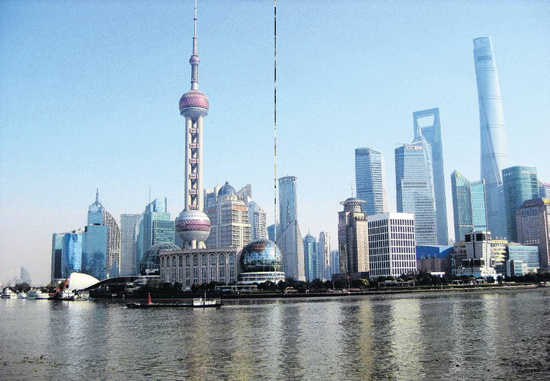
.jpg)
